There are very few places in the world as diverse and rich in history and the Valley of the Temples, in Sicily. We have seen many ancient ruins during our road trip in the Peloponnese, but very few of them can compete with the alley of the Temples (Valle dei Tempi) archeological site. Along with the ruins in Syracusa, this incredibly well preserved temples are one of Italy’s most impressive archaeological sites.
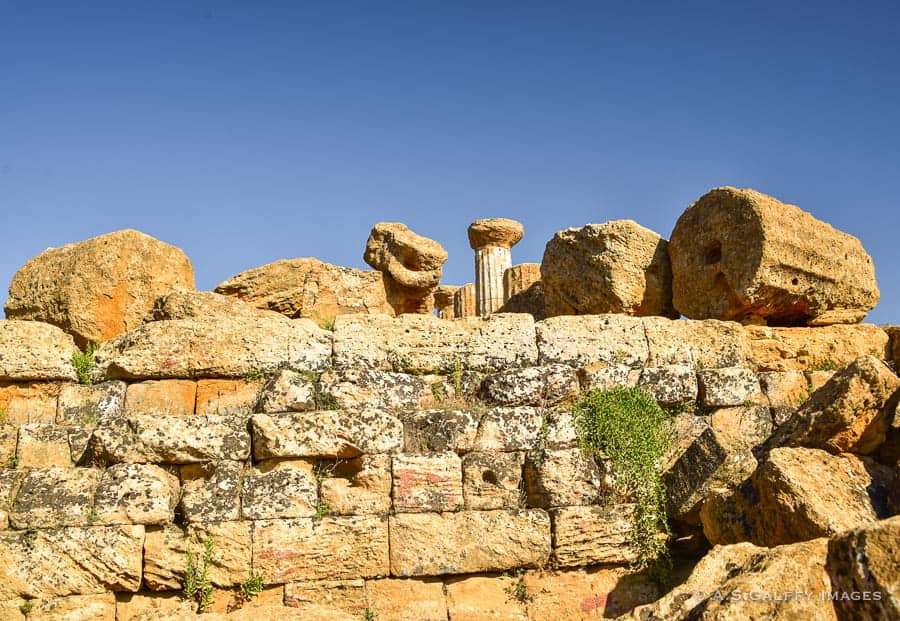
Table of Contents
A Brief History of the Valley of the Temples in Agrigento, Sicily
The Valley of the Temples is an archeological park in Agrigento, Sicily. Also known as Acragas, Agrigento was one of the most powerful cities in the Mediterranean and the leading city of Magna Graecia. The city of Agrigento and the temples that spread along a hilltop were once surrounded by huge walls.
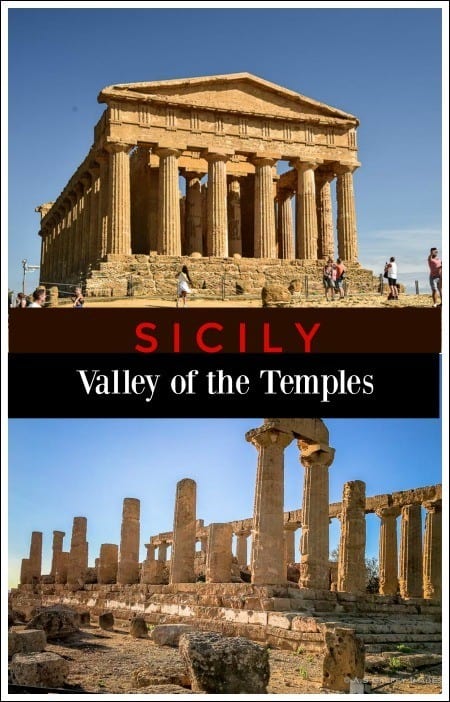
Sicily’s Valley of the Temples contains the remains of seven temples dating back to the 5th and 6th century B.C. These are the finest example of Greek Doric temples found anywhere in the world, outside of Greece itself. Six of the temples are set along the crest of the hill and one is located on the banks of the Acragas River.
The city of Acragas (today’s Agrigento) was founded by the Greeks around 580 B.C. Due to its strategic position overlooking the Strait of Sicily, Acragas was a sought after prize.
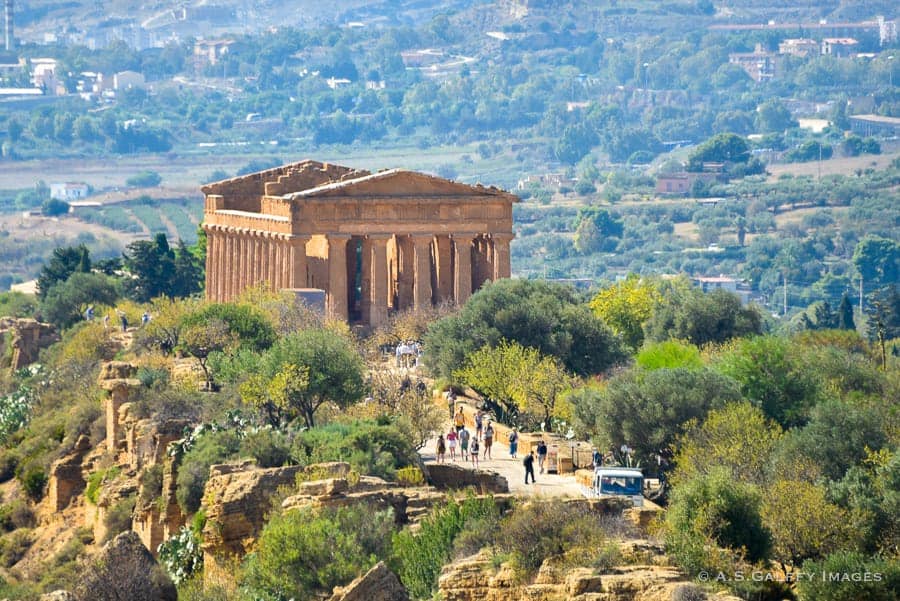
The archeological site was discovered at the beginning of the 19th century, due to the efforts of Domenico Antonio Lo Faso Pietrasanta, a Sicilian archaeologist. There is still a lot to be excavated in Agrigento, so one can only imagine how grandiose this place must have looked in the ancient world.
During World War II when Italy was invaded, the allies bombed heavily the modern town of Agrigento. Thankfully though, the Valley of the Temples was spared by the wrath of the US and British forces.
What to Expect When Visiting the Valley of the Temples
The Valley of the Temples in Sicily is overwhelming in its grandeur. When you look at the size of these structures, you may think that giants inhabited them. Imposing sandstone columns frame the temples, leaving a void space in the absence of the walls that got lost to erosion and war.
As you walk through this extraordinary site of megalithic structures you can’t help but wonder how were they even built? Who were the people who worshiped in these temples and what inspired them to erect such monumental places?
The Valley of the Temples is actually not a valley, but a hilltop. Your visit starts at the eastern gate and follows a gentle downhill path till it reaches the base of the Temple of Juno.
From here the path starts climbing up and then continues slightly downhill for two kilometers. Along the path you can see remains of the old Greek city wall that once surrounded the temples and the town of Acragas (today’s Agrigento).
Originally the temples were covered in marble and painted in bright colors, but today only the limestone remains. Just three of the seven temples are well preserved. The others are in ruins, as their stones were used to build the nearby Porto Empedocle.
Best Preserved Structures in the Valley of the Temples
Temple of Concordia
The largest and best-preserved structure in the Valley of the Temples is the Temple of Concordia ( 440–430 B.C.) It is almost entirely intact – only its roof is missing. Except for the Parthenon in Athens, there is no better preserved Greek Doric Temple anywhere in the world.
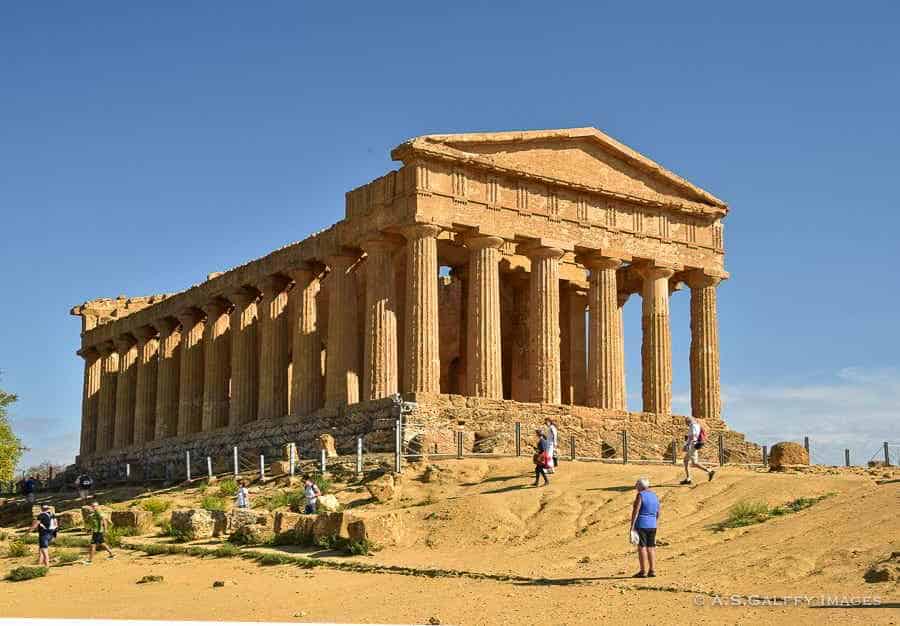
The temple sits on a solid base designed to overcome the unevenness of the rocky terrain. In the 6th century the bishop of Agrigento converted the temple into a Christian basilica dedicated to the apostles Peter and Paul. That helped it survive the destruction of pagan places of worship that took place during the persecution of pagans, in the late Roman Empire.
Temple of Juno (or Hera Lacinia)
Although not the best preserved, the Temple of Juno (450 B.C.) has the most impressive position in the Valley of the Temples: high up on a rectangular platform, 120 meters above sea level. Today 30 columns of it are standing, but only sixteen with their capitals.
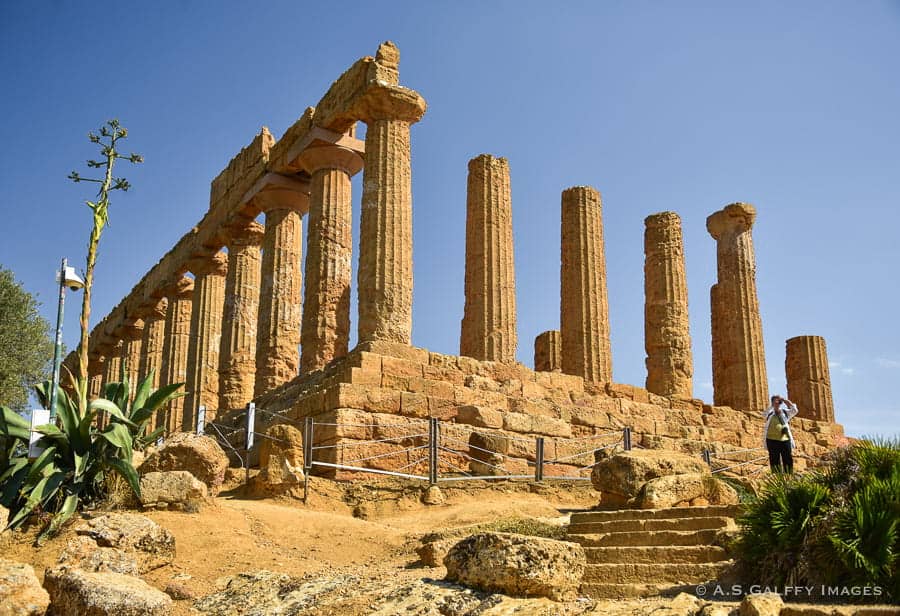
READ NEXT: Monemvasia, the Longest Inhabited Castle-Town in Greece
Temple of Heracles (or Hercules)
The Temple of Hercules (about 470 B.C.) is the second-largest temple at Agrigento. In antiquity the temple was famous for its statue of Hercules which a notorious art thief attempted to steal around 73 B.C. The Temple was damaged by fire at some point in antiquity and later renovated by the Romans.
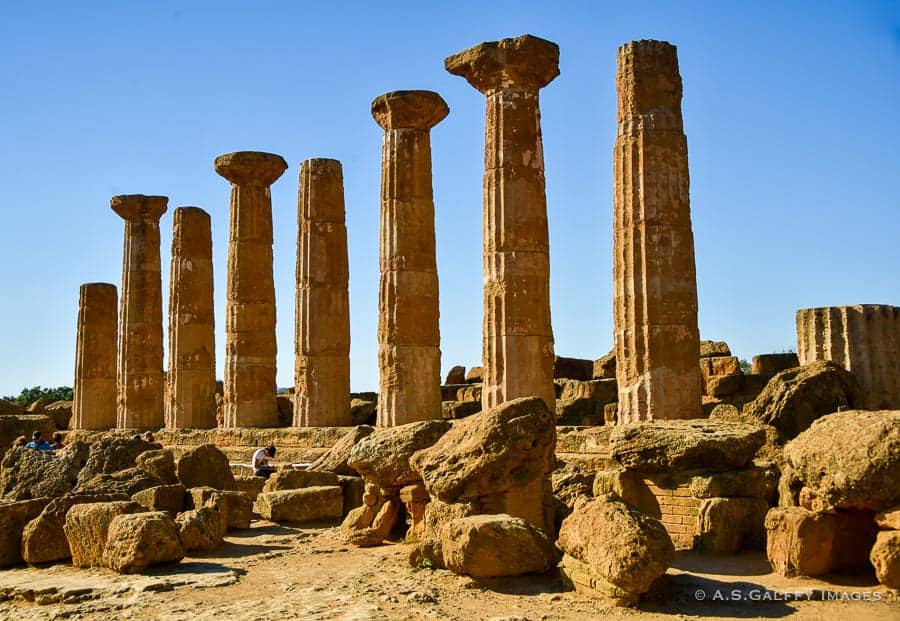
Temple of Olympian Zeus
This was once the most grandiose Doric temple in the ancient world. Unfortunately not much of it remains today of the Temple of Olympian Zeus. The temple was built around 480 BC to celebrate Agrigento’s victory over the Carthaginians at Himera, but was never fully completed.

All that’s left of it is a large base with five steps, an external wall with Doric half columns, and two stone giants that once stood upright. Now they are both lying on the ground.
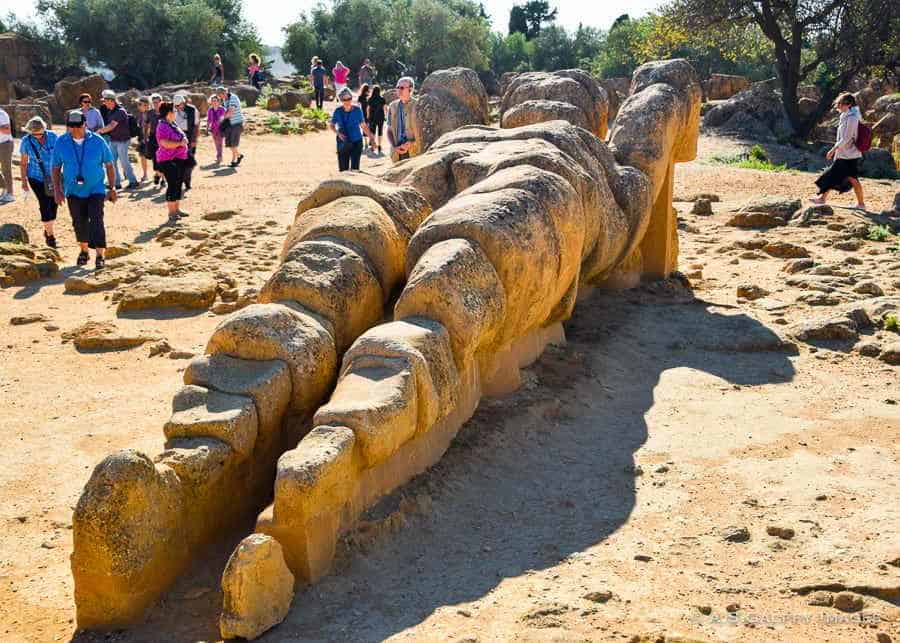
Temple of Castor and Pollux (or the Temple of the Dioscuri)
Temple of Castor and Pollux was actually completely destroyed. The northwest corner that can be seen today is but a mere reconstruction from the early 19th century, created with pieces from various other temples. It includes four columns and a beam. The temple was Doric, with 6 x 13 columns, dating from the 5th century B.C.
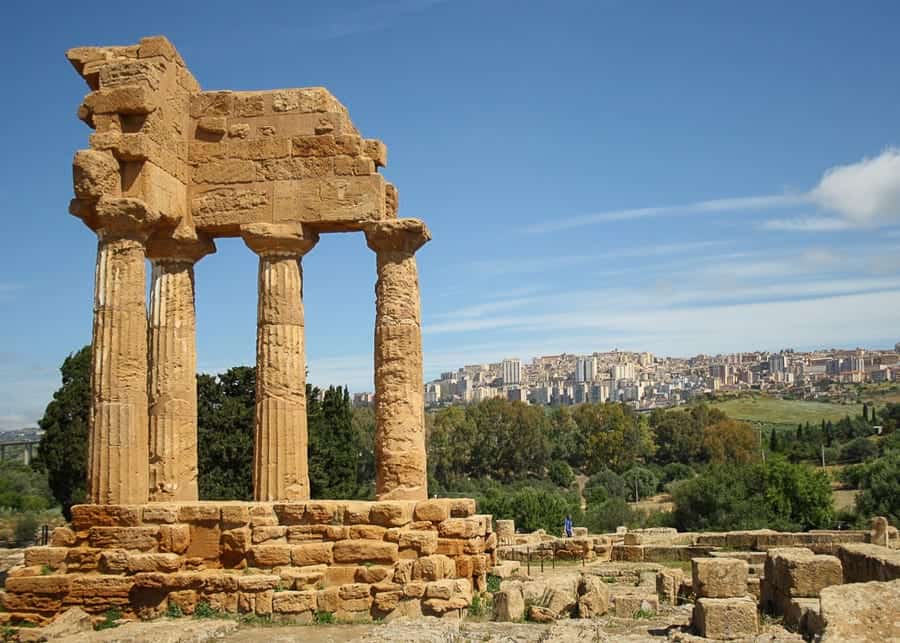
Other Remains in the Archeological Park
Besides the temples, the archeological site contains a number of ancient houses, tombs, and monuments. At the western tip of the Temple of Concordia there are parts of an ancient burial place. The burial holes that date from the late-Roman and Byzantine eras, have been built on some old cisterns.
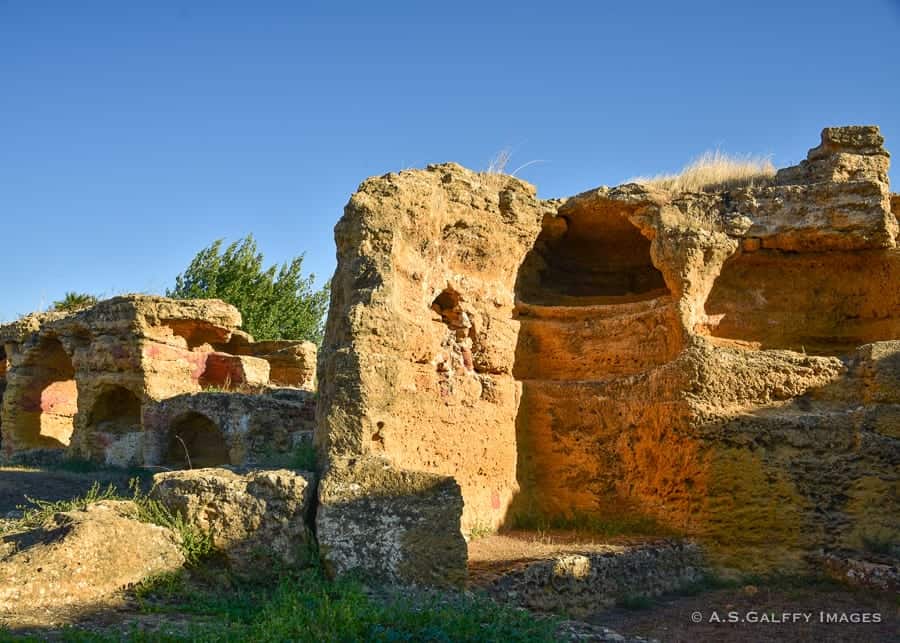
A little further away in the valley you can see a square mausoleum. For a long time historians believed this was the tomb of Agrigento’s tyrant, Theron. However, more recent research proved that the tomb was actually newer (from the 2nd century B.C.). Nonetheless, the tomb kept its name.
The Ancient Goats of Agrigento
As we were roaming the grounds of the Valley of the Temples, we noticed some strange looking goats grazing around. They looked like no other goats we have ever seen, with long white hair and spiraling twisted horns.
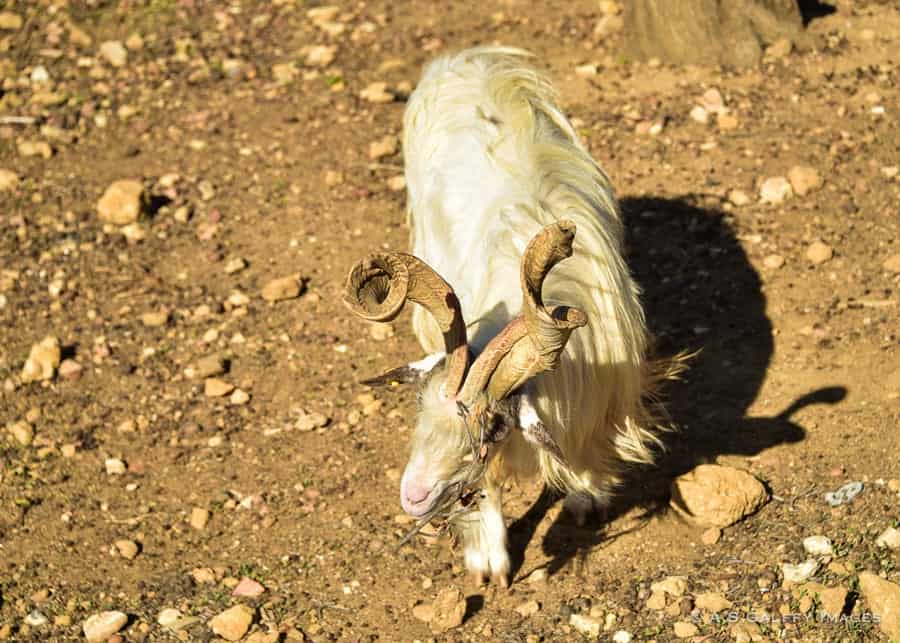
These are the ‘Capra Girgentana,’ an old goat breed that came from the Middle East. It is not clear if they arrived in Sicily with the Greeks, more than 2,500 years ago, or were brought here by the Arabs in the 8th century. Fact is that they became established in this part of the island and were once a very common domestic animal. However, the breed is near extinction today, as only a few hundred of them remain in Sicily.
READ NEXT: Driving in Sicily – the Thrills and Challenges of Visiting Sicily by Car
Practical Information for Visiting Sicily’s Valley of the Temples
How to Reach the Archeological park
We arrived in Agrigento by car via SS189 driving down from Palermo. The current city of Agrigento is perched atop a hill overlooking the Valley of the Temples.
The archeological park is just three kilometers outside the city so getting there is really easy.
There are two entrances for the archeological park. One is Porta Quinta in Contrada Sant’Anna, close to the Museum of Archeology.
The other is the eastern entrance on Via Panoramica, next to the Temple of Juno. I suggest you use this one to start your visit at the Valley of the Temples.
On Foot
You can easily walk down to the eastern entrance of the park, but coming back you’ll have to walk uphill. We visited Sicily in spring, when the temperatures were low, so we chose to walk to the Valley of the Temples.
When you return to Agrigento, rather than coming back the same way and having to walk uphill, use the Porta Quinta entrance in Contrada Sant’Anna to return to the city.
By Bus
There are two busses departing for Agrigento, either from the bus station in Piazzale Rosselli, or from the piazza next to the train station in Agrigento. The trip takes roughly 15-20 minutes.
- Bus No. 1 departs every 30 minutes and stops at the archaeological museum and also at the Porta V Western entrance.
- Bus No. 2 runs less frequently and takes you to the eastern entrance, close to Temple of Juno.
By Cab
You can also take a taxi for the short ride (about €8), but the bus is really the best option.
Parking
If you choose to drive to Sicily’s Valley of the Temples, please be advised that parking is not allowed along the road leading to the entrances. The area is patrolled by the police and you are very likely to get a parking fine.
There are however parking lots next to both entrances, but they are difficult to spot. That’s mainly because they don’t look anything like parking lots, but rather like dirt fields next to the road. You’ll notice them only as you get within 50 feet from the entrance. Parking fee is €2.00/car.

Amenities
There is a very interesting Archaeological Museum in the park that shouldn’t be missed. If you plan to visit both the museum and the archeological site, you should plan to spend the entire day in the Valley of the Temples. The Archeological park also has a visitor’s center, a snack bar and toilets.
Using the archeological park shuttle
There is a 2 km walk along the ridge top on which the main temples are located, so expect to walk. For those who don’t want to walk, there is a small bus that drives people up and down the hill for 2 euros per person. However, the bus comes only every 20 minutes and is sometimes full.
Be prepared to walk
If you visit Sicily’s Valley of the Temples in summer, be prepared for walking in treacherous heat. My advice would be to start your day as early as possible to avoid the heat. Plan to visit the temples in the morning when it’s cooler, and spend the afternoon in the museum.
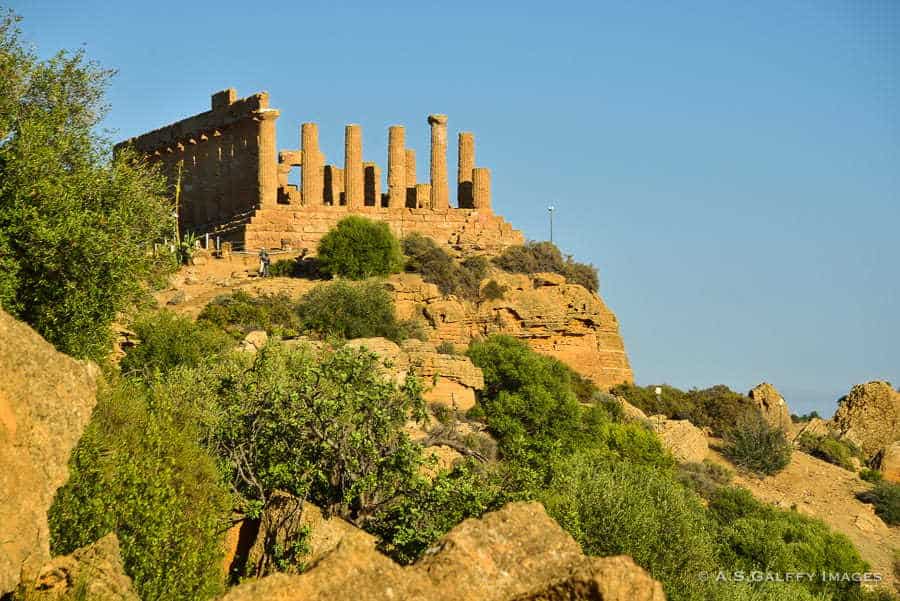
Given the rocky and uneven terrain in the Valley of the Temples, I recommend wearing comfortable shoes.
Hours and Admission
The archeological park is open daily from 8:30 am until 7:00 pm and the entry fee is €10 for adults. For members of the European Union the fee is €5 and for local residents the fee is just €1.
The fee to rent an audio guide is €6. Entrance fee for the Archeological Museum is €8.00, but you can buy a combined ticket which is a better deal, €13.50/person.
Planning a trip to Sicily? You may also like:
10 Amazing Towns in Sicily That Will Blow Your Mind Away
Fun Things to Do in Taormina
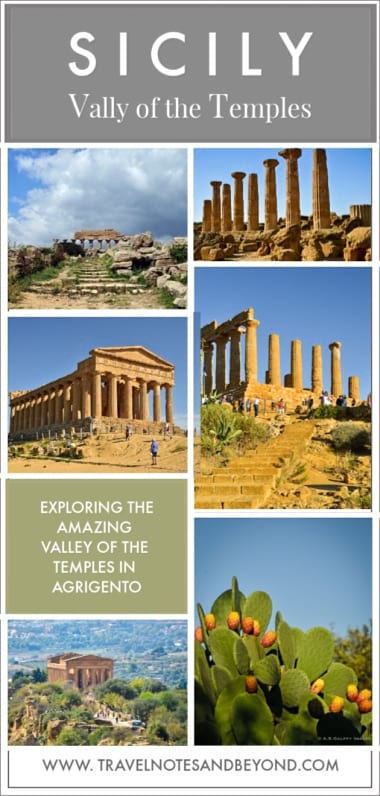

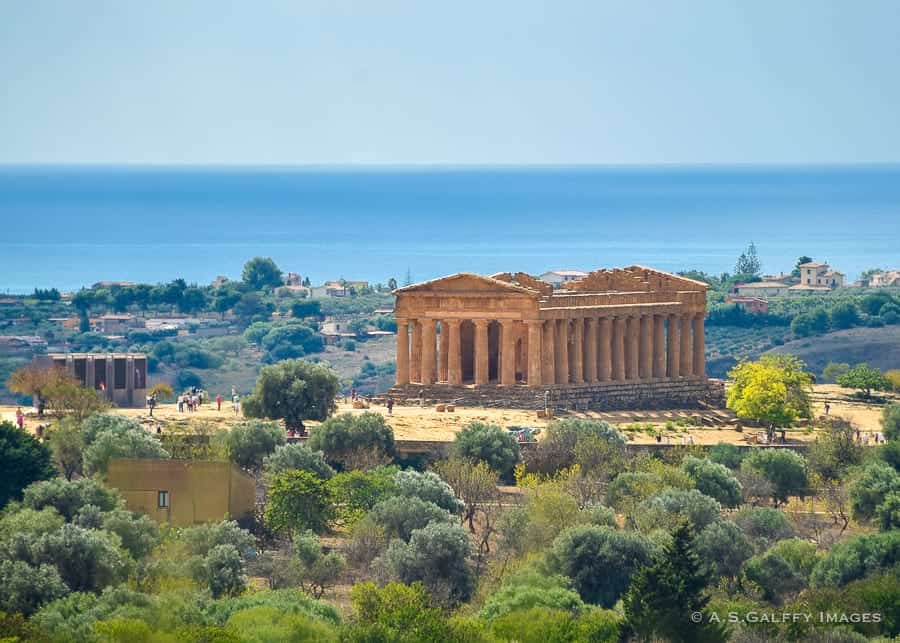
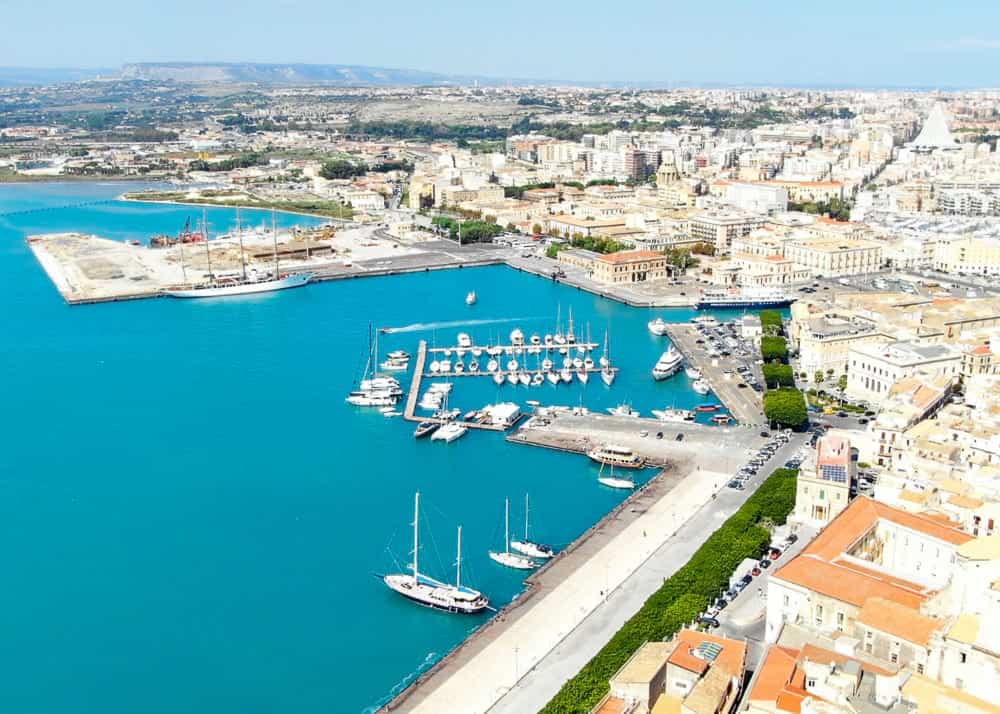 Ortigia Island: the Ultimate Guide to Visiting Siracusa, Sicily
Ortigia Island: the Ultimate Guide to Visiting Siracusa, Sicily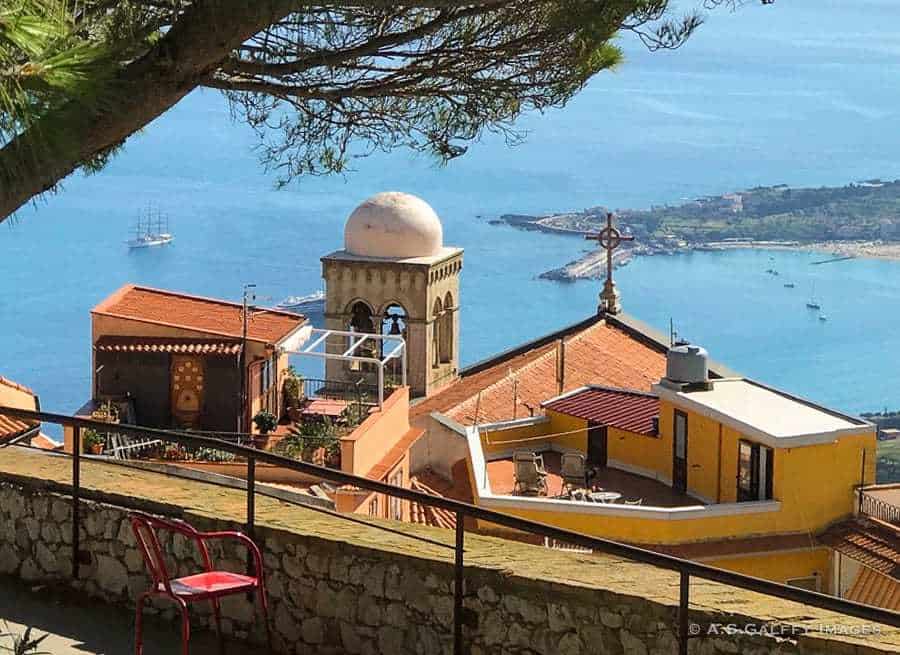



Peggy Mosley
Hi! Someone in my Facebook group shared this site with us so I came to give
it a look. I’m definitely enjoying the information. I’m bookmarking and will be tweeting
this to my followers! Exceptional blog and brilliant style and design.
Rob+Ann @TravelLatte(.net)
This is high on our Bucket List for our next trip to Italy. What amazing temples, and so much history – it would be fantastic to explore this area. Your photos are fantastic, too. You’ve definitely got us wanting to go!
Anda Galffy
Than you, Rob.
Emese
I really enjoyed this post, Anda! I felt like I was visiting along with you. Gorgeous photos, as usual. I’d love to visit Sicily and the Valley of the Temples, hope I can get there sometime.
Anda Galffy
I hope you will, Emese.
Cristina - Memories of the Pacific
Beautiful photos! I’d love to visit Sicily, it’s a dream for history lover’s like me
Anda Galffy
Hope you will see it someday, Cristina.
Sharon
Oh my! I would love to visit the Valley of the Temples! I’m a history nerd, and the ruins are beautiful. We are working on a trip to Italy in 2019. Maybe we should include Sicily???
Anda Galffy
Sicily deserves a trip of its own. I don’t know how much time you have available, but you’ll need at least 10-14 days to go around the island and visit some of the most important cities.
Jessica Norah
So many great temples and ruins – I would definitely enjoy these places and visiting the archeological park. I didn’t realize there were so many temples in Sicily! I haven’t made it that far south in Italy yet but this has made me want to go 😉
Anda Galffy
I wasn’t aware of these great archeological sites either, Jessica. It seems they are not sufficiently advertised.
Victoria - Meet The Wards
Wow! I never knew that Sicily had temples like this. I can only imagine how amazing these must have been in their glory years. Was it blocked off or were you able to enter The Temple of Concordia? Even though the roof is missing I have to guess that it would pretty amazing from the inside as well. Also the goats are pretty cute.
David
I’d love to visit Sicily one day, so much history plus all those remaining temples! This post continues the run of good things I’ve heard about the island. One day!
Anda Galffy
Hope you’ll get to visit Sicily sometime, David.
Anisa
The temple is amazing! I am surprised it is not more well-known, at least I had not heard of it. I would love to visit and learn more about the history.
Anda Galffy
Sicily is not too far from you Anisa. You can visit it sometime.
Sara
Beautiful photos of the ruins. I’m always amazed at how things are still standing and how well preserved they are. We were at a wedding last year, and an older couple was telling us that some of the best ruins they’ve ever seen are in Sicily…. which basically means that now my husband wants to visit Sicily. lol Your photos definitely make it look appealing to me, too!
Anda Galffy
I would strongly recommend Sicily, Sara. Not only for Greek/Roman ruins, but for gorgeous perched towns and amazing beaches.
Esther
Wow, I really love this!! Feel like Athens or Rome. How amazing!!
Katherine
Had I known that I was missing out on those gorgeous temples, I would have made it to Sicily a long time ago! I can’t believe how intact the Temple of Concordia is.
Anda Galffy
It’s amazing, isn’t it? We can only imagine how imposing these temples must have been in their heyday.
Jill Chapman
As fascinating as the temples look to a history buff like me, I found the goats to be very interesting. I’ve never seen a goat like that. It’s a shame they’re facing extinction.
Mary {The World Is A Book}
Wow! These temples are so fascinating. I love the history and all the architectural details. I don’t know much about the Sicily area so this was a pleasant surprise to read about. I can only imagine their grandeur in their glory days and seeing those giant statues upright. Those goats are adorable and so sad to hear about their status. What an interesting place to visit.
Laszlo
I wish I had this post available before my trip!
Anda Galffy
Yep, I agree. We struggled so much to gather some meaningful information about this destination and we had to put it together from bits and pieces.
Laszlo
I wish I had this post available before my trip!
Jeff Titelius
How incredible! If I hadn’t read the title of this article, I would have sworn I was on tour in Athens and its surrounds. All those temples and in such fine condition save Zeus’ of course. This is a great guide for everyone visiting Sicily and I am bookmarking this page for the day that I visit this journey into the past. Thank you!
Anda Galffy
Thanks for dropping by, Jeff. I’m glad if my article provided some good information for you and I hope you’ll get to visit Sicily someday. It’s a very rewarding place to explore.
Rhonda Albom
I love all the temple ruins around Europe and the Mediterranean. This site sounds like an interesting area to see the influence of the various civilizations that passed through. Those ancient goats do look old world.
Anda Galffy
You are right,Rhonda, they look (and are) really old. Their rams were used by ancient Jews to make the Shofar, a ceremonial trumpet used in religious ceremonies.